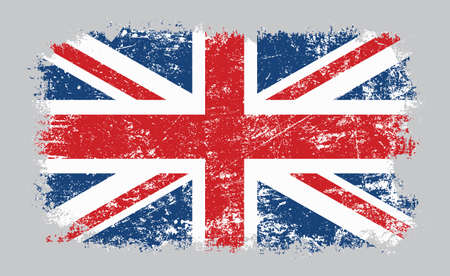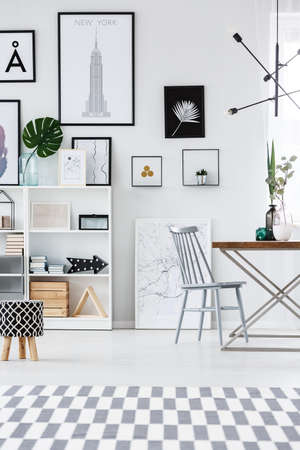Embracing British Heritage in Design
To truly understand the enduring appeal of British interiors, one must first explore how heritage shapes the very soul of design across the UK. Quintessential elements such as the iconic Chesterfield sofa—distinguished by its deep buttoning and rolled arms—have become more than just furniture; they are cultural emblems, embodying centuries-old craftsmanship and a sense of dignified comfort. Tartan patterns, originally woven into clan identity in Scotland, now feature prominently in both rural manor houses and cosmopolitan flats, weaving together stories of ancestry and tradition. Alongside these, heritage fabrics like tweed and herringbone not only lend tactile warmth to a space but also evoke a nostalgia rooted in Britain’s pastoral past. These classic motifs do not simply decorate interiors; they anchor them within a broader narrative, one that resonates with the nation’s rich cultural tapestry. In an age where trends come and go, these enduring symbols offer continuity—a reassuring link between past and present that gives every British-inspired interior an unmistakable sense of place.
2. Contemporary Interpretations of Classic Comfort
Modern British interiors excel at striking a subtle dialogue between heritage and innovation. While the essence of classic comfort—warmth, familiarity, and tactile richness—remains a cornerstone, today’s homes reinterpret these values through materials and forms that reflect contemporary lifestyles.
Innovative Materials Meet Time-Honoured Cosiness
The heart of British comfort is rooted in traditional fabrics like wool, tweed, and velvet. However, current trends see these textiles reimagined through advanced weaving techniques or blended with sustainable fibres for both longevity and eco-conscious appeal. For instance, recycled wool throws drape over mid-century sofas upholstered in stain-resistant, plant-based velvets—a nod to tradition made relevant for busy urban living.
Fresh Silhouettes: Rethinking the Familiar
While Chesterfields and wingback chairs remain beloved icons, their silhouettes are being softened or streamlined to suit modern sensibilities. Designers now opt for lower profiles, modular designs, or unexpected proportions, ensuring that even the most classic shapes feel fresh and inviting.
Balancing Old and New: Key Approaches
| Classic Element | Contemporary Twist |
|---|---|
| Tartan blankets | Oversized patterns in pastel or monochrome palettes |
| Mahogany sideboards | Matte finishes or upcycled wood with minimalist hardware |
| Stone fireplaces | Sleek bioethanol inserts within original surrounds |
| Wingback chairs | Bouclé upholstery and metal legs |
Maintaining Cosiness Through Innovation
Despite these updates, the guiding principle remains: comfort must never be sacrificed for novelty. Layered lighting schemes—mixing antique-inspired wall sconces with discreet LED uplighting—create warmth without clutter. Meanwhile, open-plan layouts prioritise sociability but retain intimate corners furnished with plush rugs and tactile cushions. In this way, British homes maintain their cherished sense of cosiness while confidently embracing the present.

3. The Texture of Timelessness
When considering the unique relationship between heritage and modernity within British interiors, the significance of texture cannot be overstated. Textiles such as wool and velvet have long been hallmarks of British comfort, their tactile warmth reminiscent of rolling Cotswold hills cloaked in early morning mist or the plush intimacy of a London club chair. These materials echo a deep-rooted connection to Britain’s pastoral landscapes, where sheep-dotted fields have shaped not only rural vistas but also the nation’s textile traditions.
Yet, the story does not end with softness alone. Exposed brickwork—a nod to the country’s industrial heritage—offers a striking contrast. Once found in Victorian warehouses and Manchester mills, these rugged surfaces now feature prominently in modern homes, their raw edges grounding contemporary spaces in historical authenticity. This interplay evokes memories of Britain’s transformation from agrarian calm to industrial dynamism, merging nostalgia with urban energy.
Polished metals, whether brushed brass fittings or sleek steel accents, further enhance this dialogue. Their reflective qualities introduce an element of sophistication while recalling the innovations of the Industrial Revolution. In modern British interiors, these metallic finishes act as bridges between past and present: they capture light much like the glinting spires along the Thames or the machinery that powered an era of progress.
Together, these textures—wool, velvet, brick, and metal—form a nuanced palette that balances classic British comfort with contemporary sensibilities. Through their thoughtful juxtaposition, interiors become layered narratives: each surface telling a tale of landscape, labour, and legacy, woven seamlessly into the fabric of modern living.
4. Colour Stories: From Muted Hues to Bold Accents
In the ongoing dialogue between heritage and modernity, the British approach to colour is a striking reflection of this balance. Traditional British interiors are renowned for their use of deep, comforting shades—think forest greens, navy blues, and rich burgundies—evoking a sense of understated sophistication and time-honoured elegance. These hues draw on the natural landscapes of the British Isles, from rolling hills to moody coastlines, anchoring spaces in a palette that feels both familiar and reassuring.
Yet, as contemporary design sensibilities permeate British homes, there is an increasing inclination to punctuate these classic backdrops with bold, unexpected accents. Vibrant ochres, punchy corals, and flashes of teal or mustard now emerge alongside traditional palettes, bringing a sense of urban vitality and creative energy to interiors. This evolution reflects not only changing tastes but also the multicultural dynamism found in cities like London and Manchester, where tradition meets innovation at every turn.
Classic vs Contemporary: A Chromatic Dialogue
Traditional British Hues |
Modern Accents |
|---|---|
Deep GreenRooted in countryside heritage and stately homes; pairs well with oak woods and leather furnishings. |
Lively TealAdds vibrancy without overwhelming; often used in soft furnishings or art pieces for an urban edge. |
Navy BlueA symbol of classic British restraint; offers depth and calmness to libraries or drawing rooms. |
Mustard YellowA playful counterpoint; injects warmth and highlights architectural details or statement furniture. |
Burgundy & PlumSophisticated tones linked to tradition and luxury; frequently seen in textiles and wallpapers. |
Crisp CoralPops against muted backgrounds; evokes modern art influences and metropolitan flair. |
This interplay between muted tradition and daring modernity enables British interiors to feel rooted yet relevant. The layering of subdued backgrounds with bright focal points mirrors the wider cultural landscape—where respect for history coexists with a hunger for reinvention. Ultimately, colour stories within British design serve not just as aesthetic choices but as a narrative device: telling tales of continuity, adaptation, and a uniquely British way of blending comfort with creativity.
5. Craftsmanship and Local Artisans
British interiors have long been defined by their deep-rooted tradition of craftsmanship, a legacy that is experiencing a vibrant renaissance in today’s design landscape. As the appetite for authentic, meaningful spaces grows, homeowners and designers alike are turning to local artisans whose skills echo centuries-old techniques while embracing the sensibilities of contemporary living. From hand-thrown ceramics gracing mantelpieces to bespoke joinery framing modern open-plan kitchens, these crafted elements act as tactile bridges between heritage and modernity.
The Enduring Allure of Handcrafted Details
There’s an undeniable charm in the imperfect beauty of hand-finished pieces—each one imbued with a sense of place and personality. British potters and ceramicists draw inspiration from the rolling countryside and historic towns, creating tableware and decorative objects that subtly reference the past yet feel wholly current. These items not only add texture and character but also serve as quiet statements about valuing skilled labour in an increasingly mechanised world.
Bespoke Joinery: Where Tradition Meets Innovation
Joinery has always been at the heart of classic British comfort, whether it’s intricately panelled walls or window seats that invite lingering afternoons. Today’s craftspeople are updating these traditions using sustainable timbers and minimalist lines, blending time-honoured methods with new materials and finishes. The result is cabinetry and woodwork that honours provenance while fitting seamlessly into light-filled contemporary homes.
Celebrating Local Talent in Modern British Homes
This renewed appreciation for craftsmanship is more than nostalgia—it’s a conscious choice to support local makers and foster community identity. By commissioning pieces from regional workshops or seeking out collaborations with independent artisans, homeowners invest in stories as much as objects. In doing so, they create interiors where heritage skill isn’t just preserved but is actively reinterpreted for modern taste—a true celebration of British ingenuity both old and new.
Sustainability as a Modern Tradition
In the ongoing dialogue between heritage and modernity, contemporary British design has embraced sustainability not simply as a passing trend, but as an evolving tradition. Today’s interiors increasingly reflect a collective consciousness that honours the past while safeguarding the future—a sensibility distinctly woven into the fabric of British culture.
Reclaimed Materials: Reviving British Character
The use of reclaimed materials stands at the forefront of this movement. Whether it’s York stone salvaged from historic mills or timber beams with stories etched in their grain, these elements infuse spaces with authentic character. Their weathered patina brings depth and narrative, seamlessly bridging centuries-old craftsmanship with present-day sensibilities.
Vintage Finds: Curated Nostalgia
Vintage furniture and decorative objects are being thoughtfully reintroduced into modern homes, further connecting the dots between eras. A mid-century Ercol chair beside a contemporary velvet sofa, or antique brass lamps atop minimalist shelving—such juxtapositions offer both environmental benefits and a curated sense of nostalgia. This approach champions longevity over fleeting trends, echoing Britain’s appreciation for enduring quality.
Eco-Conscious Brands: New Standards of Luxury
Bespoke British brands are now setting new standards by prioritising ethical production and locally sourced materials. From handwoven wool throws crafted in Yorkshire to eco-friendly paints developed in Cornwall, these choices represent a conscious shift towards responsible luxury. Such brands resonate with discerning homeowners who wish to align their living spaces with their values, without compromising on comfort or style.
A Responsible Future Rooted in Heritage
This renewed focus on sustainability is not merely about aesthetics—it reflects a profound respect for both tradition and progress. By balancing classic British comfort with innovative eco-consciousness, contemporary design continues to evolve while remaining deeply rooted in its heritage. In this way, sustainability becomes more than a modern aspiration; it stands as a new layer of tradition for generations to come.


